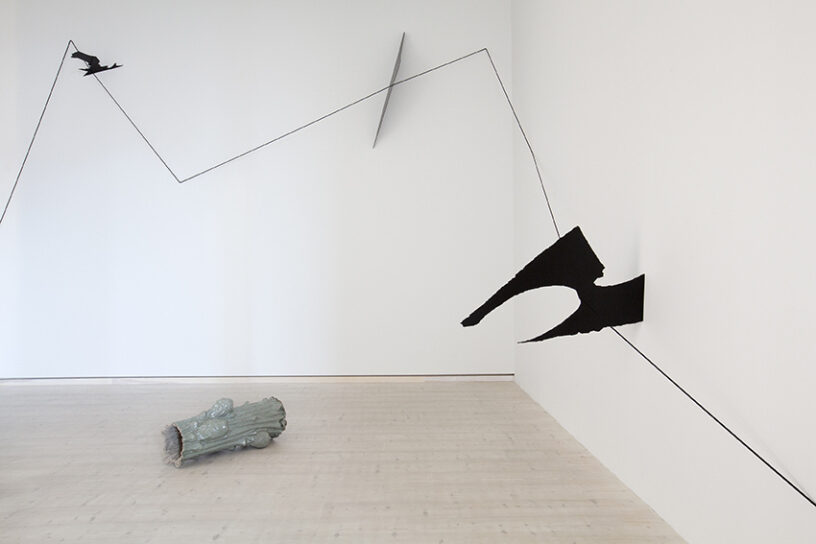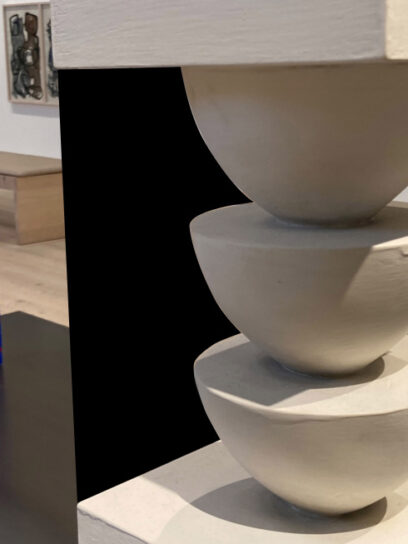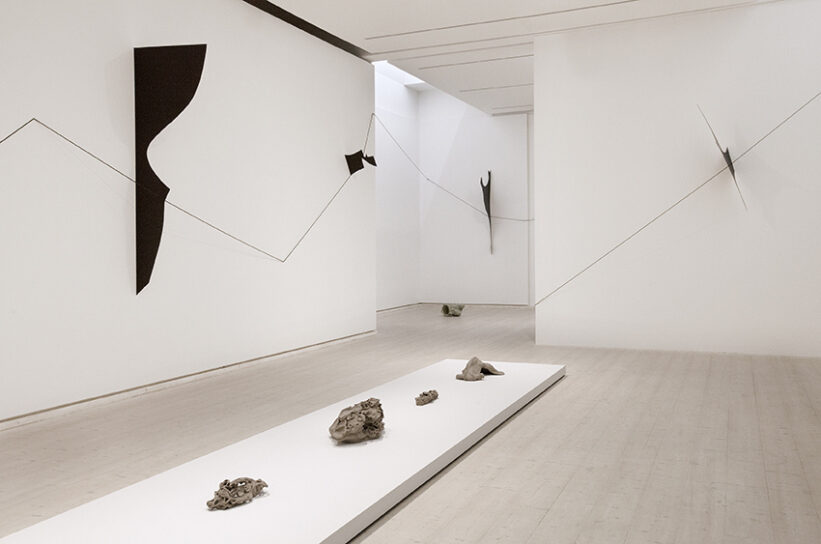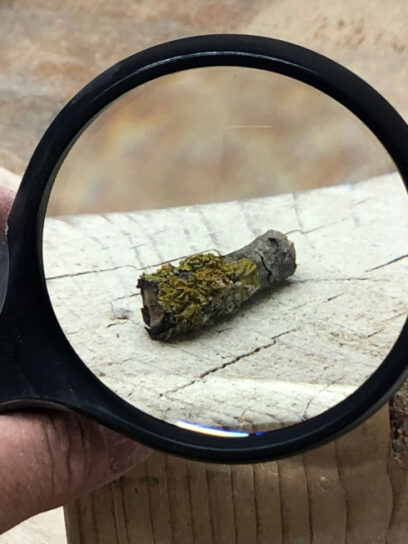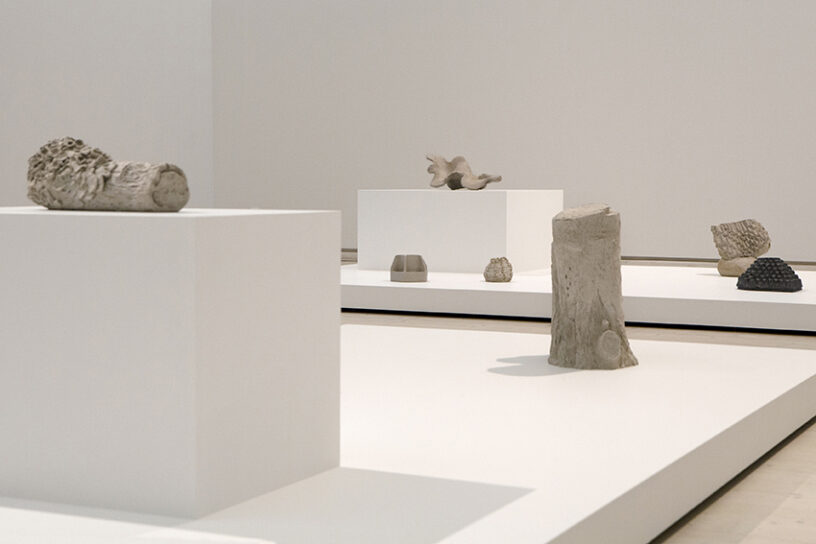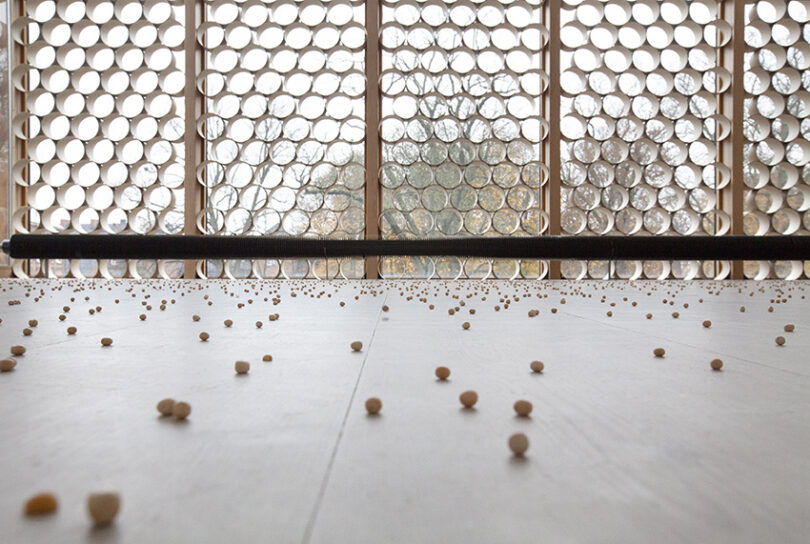- Open today 11–19
- Open today 11–19
GAPET – Carl Boutard och Kristina Matousch
Carl Boutard and Kristina Matousch, both active on public space projects, meet here in the exhibition Gapet (The Gap) where the key focal points are the artistic process, the space and the time dimension. Boutard presents completely new works, and Matousch has created several installations specifically for the museum’s exhibition space.
Carl Boutard’s sculptures originate from the fragments and objects he finds when he is out walking, or from the architectural details he photographs. In an intuitive process, the insignificant is then examined, combined and shaped with carefully chosen objects. Some are scaled-up in clay and transformed into sculptures in bronze or other materials. Small items from nature are given a new sculptural dimension, and details, usually barely noticed, are made visible. In several of the projects that Boutard has created for the public space, the observer finds themself in front of scaled-up parts of branches or seeds, or facing articles that are intertwined with vegetation or the built environment. By bonding together, taking apart and putting together in a new and unexpected way, he gives nature a new configuration. Reflections on form and space and the relationship between nature and culture constantly recur in Boutard’s artistic output.
It takes time to transform the small fragments or details into a sculpture, and the forms change during the process. In the exhibition, Boutard highlights the early work process and allows the models – an important but rarely noticed stage of the work – to play the lead role as independent works. Several of them were produced during an artist residency at a ceramics centre in the Netherlands. They are small conceptual sketches in fired clay that can be likened to three-dimensional diary entries. The exhibition also features a slightly larger work in glazed stoneware entitled Eight Years and Two Weeks Later. It is based on a spruce twig Boutard found in Malmö ten years ago. The green-glazed sculptures are selected pieces of a scale-up he did of the spruce twig. The process behind their genesis includes the creation of a full-scale model in clay, produced by silicon and plaster casts, press casting, drying, firing, glazing – and transport. Boutard likens the complex transition from a fragment to a finished work to building a bridge over a gap, or to repairing a breach.
Kristina Matousch has an ambivalent relationship to objects, which is why in recent years she has explored various aspects of holes. In the work for Skissernas Museum, interspatial forms play a central role, i.e. what is “not there”. Her work is often industrially manufactured which means that surfaces and cuts are exact in contrast to the human body and the hand’s imprint. The works may raise existential issues such as the will to break free, disappear or be enclosed. She finds subjects to work on in everyday objects and activities; frying meatballs could be the starting point for a new work, for example. Life charges the materials. In this exhibition, Matousch examines the relationship between artworks, space and the observer.
In Retake, Matousch takes works from the museum’s collection and creates a site-specific installation for the museum’s exhibition space. Black sheets in various shapes are stretched against the wall with a rubber rope. Matousch has found the shapes’ contours among models in the museum’s galleries. She has photographed their contours and configures them here as flat surfaces like pieces of a puzzle. The interspaces, the gaps, are transformed into physical objects that are braced against the wall and protrude into the room. With her work, she recreates meetings between works in the collection, and art history is taken into the present – as if she wants to get close to other artists’ relations to their works, when they were created. Retake has certain similarities with an earlier work, Smooth Cut, where the objects consist of the interspaces between women’s legs.
In Scenery, a machine hangs from the ceiling and at regular intervals peas fall out through a hole. They are in free fall and bounce a few times before coming to a stop. On the floor under the machine is a low, circular frame where the peas perform as if on stage or in an arena. The momentary sound when the peas bounce against the floor sharpens our senses. Through the window we can feel contact with the landscape and the city. The work stands in contrast to the installation Retake, in which all forms are held back behind the taut rope.
A leaflet has been produced for the exhibition in which Ellen Klintenberg, curator at the Ystad Art Museum, describes the artists’ working process leading up to the exhibition.
Carl Boutard (born 1975) trained at the Iceland University of the Arts (IUA) in Reykjavik, the KTH School of Architecture in Stockholm and the Malmö Art Academy. He is currently associate professor and programme director for the Bachelor’s programme at Department of Fine Art at the IUA. His latest exhibitions include Budding Earth at Ásmundarsafn, Reykjavik Art Museum (2021/2022) and Paper Space at the Cecilia Hillström Gallery, Stockholm (2020). Boutard has created several public works including Mo(der)nism, Åkeshov Sports Center, Stockholm (2019), Älvpromenad, Almen Square, Karlstad (2015), Lebenslauf, the Skandion Clinic, Uppsala (2014), Lärk i Lind, Schloss Park, Heidenheim, Germany (2013), Kugelbaum, Kulparkskolan, Stångby (2013) and Into the Wild, School of Architecture, Lund University (2012). Boutard’s work is found in several collections including Malmö Art Museum, Skissernas Museum and the Public Art Agency Sweden.
Kristina Matousch (born 1974) trained at the Royal institute of Art in Stockholm. Her latest solo exhibitions were Internal at Krognoshuset in Lund (2021), Trip at Galleri Thomas Wallner in Simris (2020/2021) and You Take My Breath Away at the Cecilia Hillström Gallery, Stockholm (2020). She has produced several public pieces including Knopen, Medborgarhuset, Stockholm, in collaboration with Anders Soidre (2021), Piece of Mind, Änglandaskolan, Örebro (2019), Stream, New Karolinska Hospital, Solna (2017) and Pizza Box, Hagalundskolan, Dalby, in collaboration with Anders Soidre (2016). Matousch’s work is found in several collections including Moderna Museet, Malmö Art Museum, Borås Art Museum and at the Public Art Agency Sweden and Region Skåne.
The artists are represented by Cecila Hillström Gallery, Stockholm.

